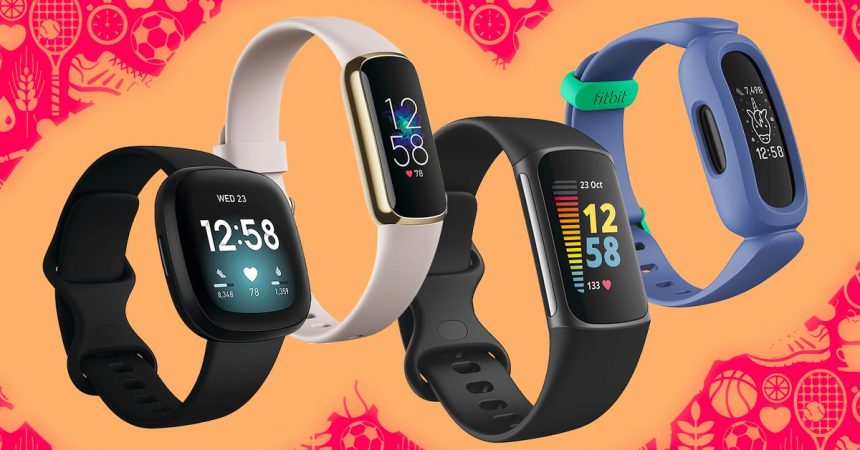Fitbit in 2024: Navigating a Transitional Landscape
Fitbit, a once-independent giant in the fitness tracking world, now finds itself under the Google umbrella, navigating a period of transition and uncertainty. While the brand retains its recognition, the recent years, especially 2023, have been marked by server outages, controversial decisions like the sunsetting of legacy community features, and the mandatory migration to Google accounts. This shift, coupled with the departure of Fitbit’s co-founders and the integration of Google employees, has raised questions about the future direction of the platform. Fitbit users are now grappling with a changing landscape, balancing the familiarity of Fitbit’s core offerings with the encroaching influence of Google’s ecosystem. This transition has created some apprehension among loyal users, leading some to consider alternative platforms like Garmin or Amazfit.
Evaluating Fitbit Devices: Key Considerations
Despite the uncertainties, Fitbit continues to offer a range of fitness trackers and smartwatches. When considering a Fitbit device, several factors warrant careful consideration. Battery life remains a strength, with most trackers offering around five days on a single charge. However, features like always-on displays can significantly impact battery performance. Feature sets vary across models, with some offering advanced metrics like EKG readings, blood oxygen levels, and real-time stress tracking, while others stick to basic activity monitoring. The presence of built-in GPS is another factor to consider, especially for those who engage in outdoor activities. The pricing of Fitbit devices is also crucial, as the market has become increasingly competitive with the emergence of numerous alternatives. Finally, the target user plays a vital role in choosing the right Fitbit. Factors like design versatility, strap durability, and overall functionality should align with the user’s lifestyle and needs, whether they are casual users, kids, or athletes.
Fitbit’s Product Line: A Detailed Overview
Fitbit’s product line caters to various needs and budgets. The Google Pixel Watch 3, while technically a Google product, leverages Fitbit’s health and fitness expertise. This watch marks a significant upgrade with brighter screens, smaller bezels, and a new 45mm size option. Its elegant design sets it apart from Fitbit’s previous smartwatch attempts. The inclusion of features like a running dashboard, advanced form analytics, and Cardio Load metric enhances its appeal to runners. Moreover, the revamped Daily Readiness Score, Loss of Pulse detection (for European users), and strengthened Google service integrations add further value. The Pixel Watch 3 essentially represents the smartwatch Fitbit couldn’t build independently, showcasing the potential of the Google-Fitbit partnership.
For budget-conscious users, the Fitbit Inspire 3 offers a minimalist fitness band experience with a bright OLED screen, advanced sleep tracking, and stress management features. Its 10-day battery life, coupled with a variety of accessories, makes it a compelling option for those seeking basic activity tracking without the smartwatch frills. The Fitbit Charge 6, positioned as a higher-end fitness band, rivals the Versa 4 in terms of features. It boasts a color OLED screen, EKG and EDA sensors, built-in GPS, NFC payments, and SpO2 sensors. While the always-on display impacts battery life, the Charge 6 offers exceptional value, especially considering its sub-$200 price point for FDA-cleared EKG functionality.
Fitbit also caters to younger users with the Ace 3, a basic tracker with parental controls designed to encourage activity in children. The more advanced Ace LTE, with its Pixel Watch 2 internals and built-in LTE for calling, messaging, and real-time GPS tracking, offers a more comprehensive solution for parents seeking greater connectivity and safety features for their children. The Ace LTE’s gamified approach to activity tracking and parental control features make it a unique offering in the children’s wearable market.
The Google Question: Implications for Fitbit’s Future
The Google acquisition of Fitbit has undoubtedly brought about changes, some welcomed and others less so. The mandatory migration to Google accounts, the closure of community features, and the launch of less feature-rich Versa 4 and Sense 2 smartwatches have caused concern among some users. The server outages further complicate the picture, adding to the uncertainty surrounding Fitbit’s trajectory. The integration with Google raises questions about data privacy and the potential for Fitbit’s platform to become more intertwined with Google’s ecosystem, potentially losing some of its distinct identity.
Navigating the Fitbit Landscape: A Cautious Approach
Given the current state of flux, potential Fitbit buyers should proceed with caution. While Fitbit trackers remain affordable and offer a free trial of Fitbit Premium, the long-term direction of the platform is not entirely clear. The integration with Google may eventually lead to a more seamless experience within the Google ecosystem, but it also carries the risk of losing the distinct Fitbit identity that has attracted many users. For those seeking a fitness tracker with a longer lifespan and a more stable platform, exploring alternatives like Garmin or Amazfit may be advisable. However, for users already invested in the Fitbit ecosystem or those seeking specific features offered by Fitbit devices, proceeding with a purchase can still be a viable option, as long as they are aware of the ongoing transition and potential future changes.



